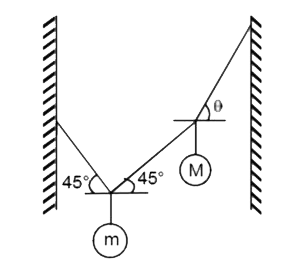Consider two cylinder piston assembly as shown in figure (a) and in figure (b) are kept in vacuum. Assume both piston are massless. Let two masses m1 and m2 are kept on the piston as shown in figure. Values of m1 and m2 are in the range in which both liquid and vapour phase coexist and are in equilibrium.

Solution I contains 10 moles of liquid A and 10 moles of liquid B while solution II contains 8 moles of liquid A and 12 moles of liquid B. Let liquids A and B are completely miscible and form an ideal binary solution.
Given : P∘A=100 torr, P∘B=60 torr,
Let XA= mole fraction of A in liquid phase in solution I
X'A= mole fraction of A in liquid phase in solution II
YA= mole fraction of A in vapour phase in solution I
Y'A= mole fraction of A in vapour phase in solution II
If m1=m2 then :
XA=X'A
XA>X'A
XA<X'A
XA and X'A can't be co-related
The correct Answer is:A
Step by step video, text & image solution for Consider two cylinder piston assembly as shown in figure (a) and in figure (b) are kept in vacuum. Assume both piston are massless. Let two masses m_(1) and m_(2) are kept on the piston as shown in figure. Values of m_(1) and m_(2) are in the range in which both liquid and vapour phase coexist and are in equilibrium. Solution I contains 10 moles of liquid A and 10 moles of liquid B while solution II contains 8 moles of liquid A and 12 moles of liquid B. Let liquids A and B are completely miscible and form an ideal binary solution. Given : P_(A)^(@) = 100 torr, P_(B)^(@) = 60 torr, Let X_(A) = mole fraction of A in liquid phase in solution I X'_(A) = mole fraction of A in liquid phase in solution II Y_(A) = mole fraction of A in vapour phase in solution I Y'_(A) = mole fraction of A in vapour phase in solution II If m_(1) = m_(2) then : by Chemistry experts to help you in doubts & scoring excellent marks in Class 12 exams.
Topper's Solved these Questions
- BOOK - GRB PUBLICATIONCHAPTER - LIQUID SOLUTIONSEXERCISE - 712videos
LIQUID SOLUTIONS
- BOOK - GRB PUBLICATIONCHAPTER - LIQUID SOLUTIONSEXERCISE - 1012videos
LIQUID SOLUTIONS
- BOOK - GRB PUBLICATIONCHAPTER - LIQUID SOLUTIONSEXERCISE - 394videos
LIQUID SOLUTIONS
- BOOK - GRB PUBLICATIONCHAPTER - IONIC EQUILIBRIUMEXERCISE - All Questions526videos
IONIC EQUILIBRIUM
- BOOK - GRB PUBLICATIONCHAPTER - METALLUGYEXERCISE - Subjective type1videos
METALLUGY
Similar Questions
Knowledge Check
- Question 1 - Select One
Consider two cylinder piston assembly as shown in figure (a) and in figure (b) are kept in vacuum. Assume both piston are massless. Let two masses m1 and m2 are kept on the piston as shown in figure. Values of m1 and m2 are in the range in which both liquid and vapour phase coexist and are in equilibrium.

Solution I contains 10 moles of liquid A and 10 moles of liquid B while solution II contains 8 moles of liquid A and 12 moles of liquid B. Let liquids A and B are completely miscible and form an ideal binary solution.
Given : P∘A=100 torr, P∘B=60 torr,
Let XA= mole fraction of A in liquid phase in solution I
X'A= mole fraction of A in liquid phase in solution II
YA= mole fraction of A in vapour phase in solution I
Y'A= mole fraction of A in vapour phase in solution II
Mole fraction of A in liquid phase when 10 moles of solution is vapoursied in solution II is :A0.45B0.632C0.25D0.34 - Question 2 - Select One
Two masses m1 and m2 are attached to a spring balance S as shown in Figure. If m1>m2 then the reading of spring balance will be
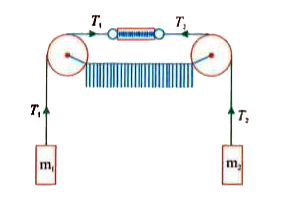 A(m1−m2)B(m1+m2)C2m1m2m1+m2Dm1m2m1+m2
A(m1−m2)B(m1+m2)C2m1m2m1+m2Dm1m2m1+m2 - Question 3 - Select One
Two masses m1 and m2 are attached to a spring balance S as shown in figure. m1>m2 then the reading of spring balance will be .
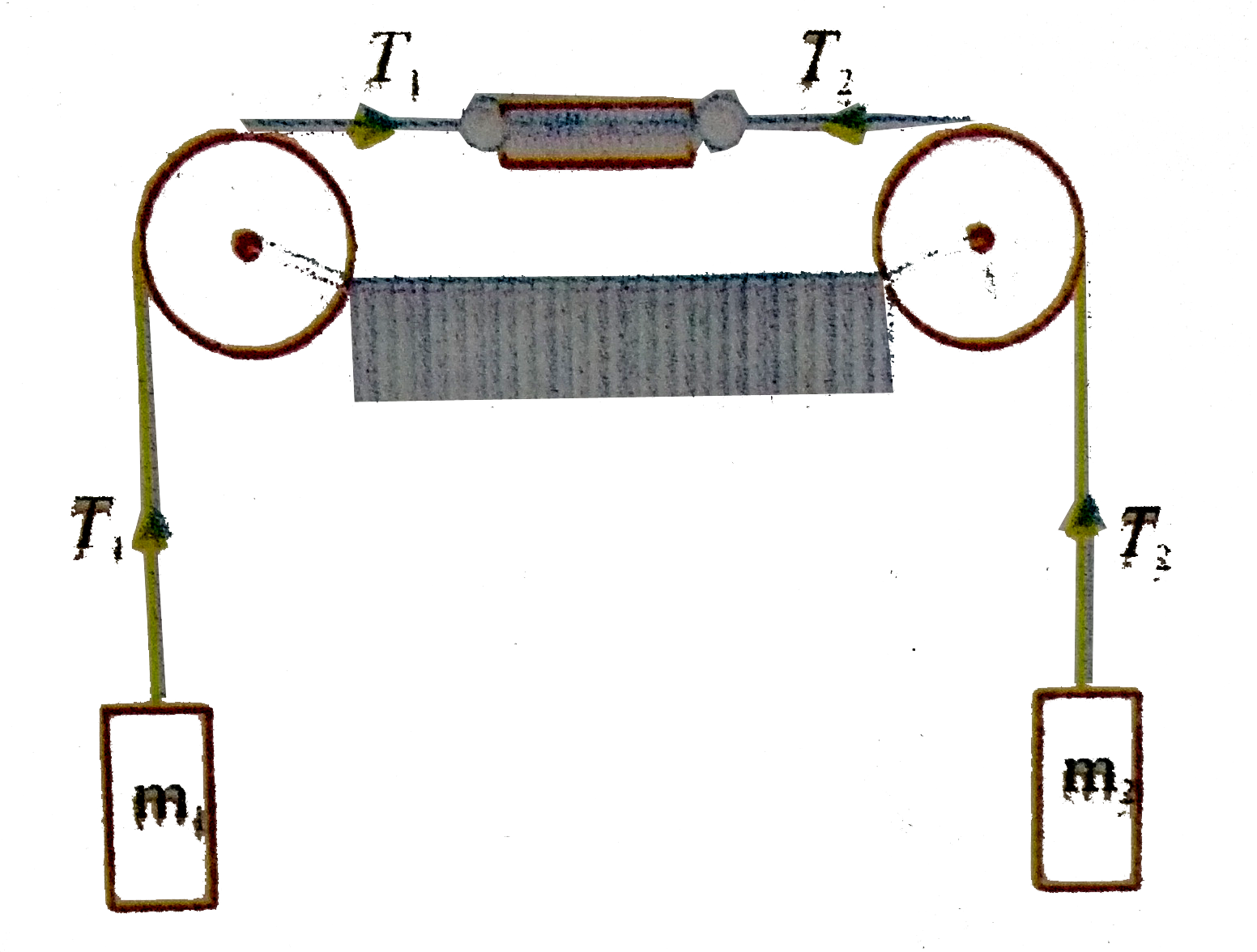 .A(m1−m2)B(m1+m2)C2m1m2m1+m2Dm1m2m1+m2
.A(m1−m2)B(m1+m2)C2m1m2m1+m2Dm1m2m1+m2
Two masses m1 and m2 are connected by a massless string as shown in Fig. Find the value of tension in the string if a force of 200 N is applied on (i) m1 and m2.
 View Solution
View SolutionTwo block of masses m1 and m2 are connected as shown in the figure. The acceleration of the block m2 is:
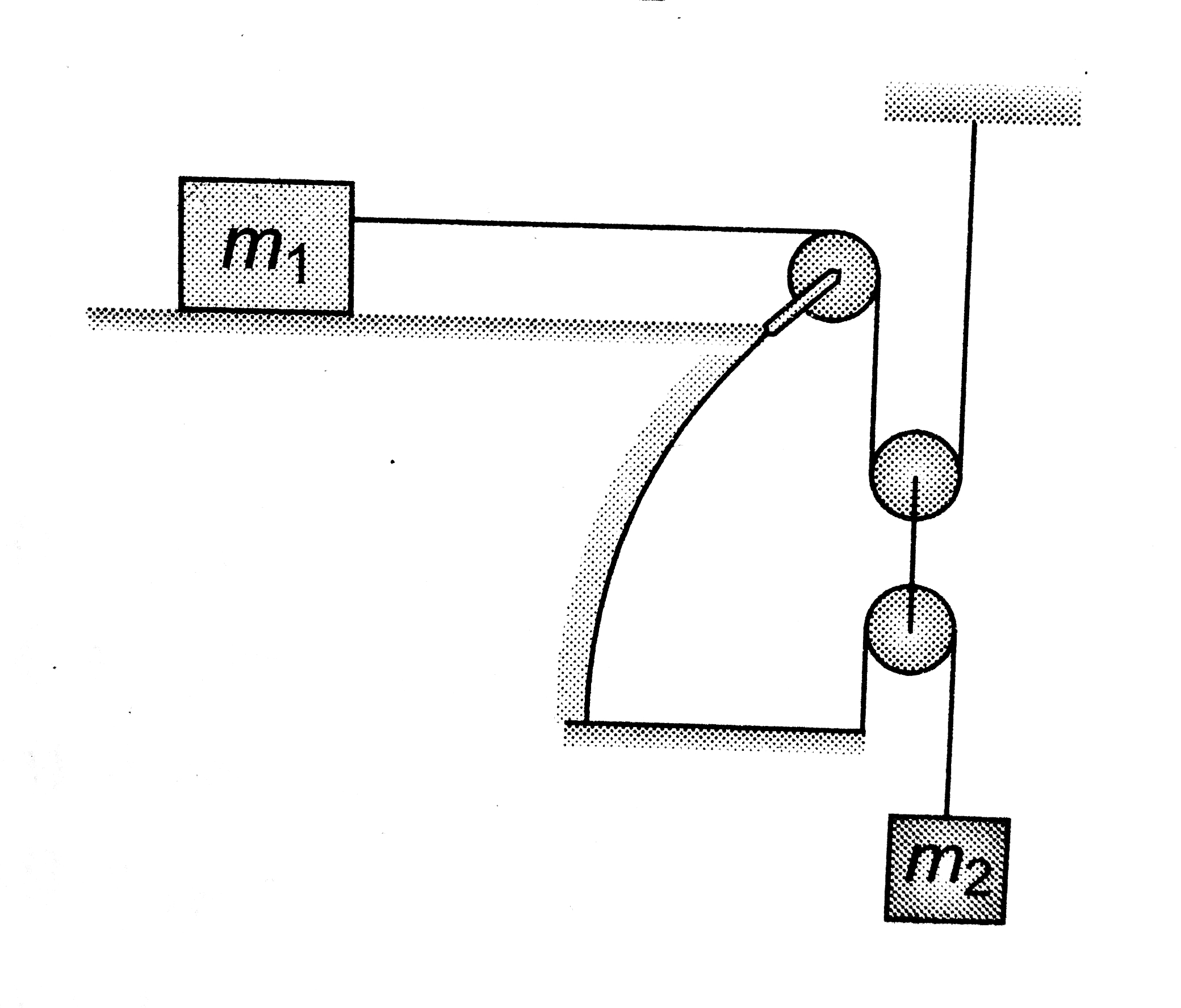 View Solution
View Solution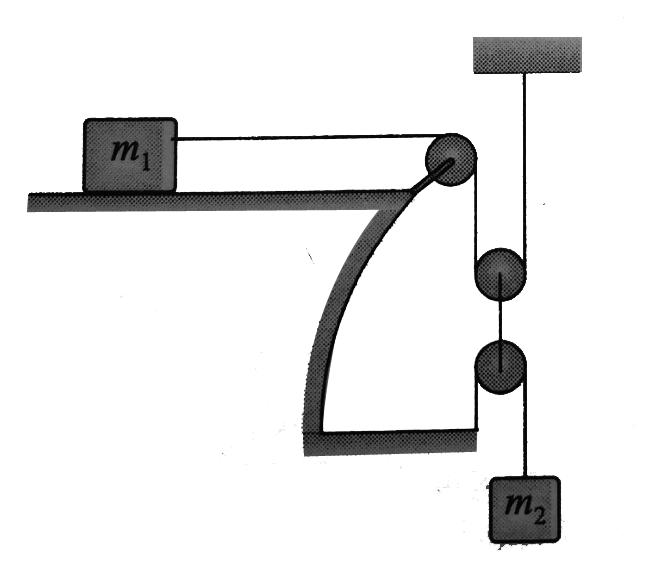
Two blocks of masses m1 and m2 are connected as shown in the figure. The acceleration of the block m2 is :View SolutionTwo masses m and M are attached to the strings as shown in the figure. If the system is in equilibrium, then
 View Solution
View Solution10 mole of liquid 'A' and 10 mole of liquid 'B' is mixed in a cylindrical vessel containing a piston arrangement. Initially a pressure of 2 atm is maintained on the solution. Now, the piston is raised slowly and isothermally. Assuming A and B to be completely miscible and forming an ideal solution.
P∘A=0.6 atm and P∘B=0.9 atm
If 14 of the total amount of liquid solution taken initially is converted to vapour, then moles of A in the vapour will be :
[Given : √2425=49.25]View Solution



